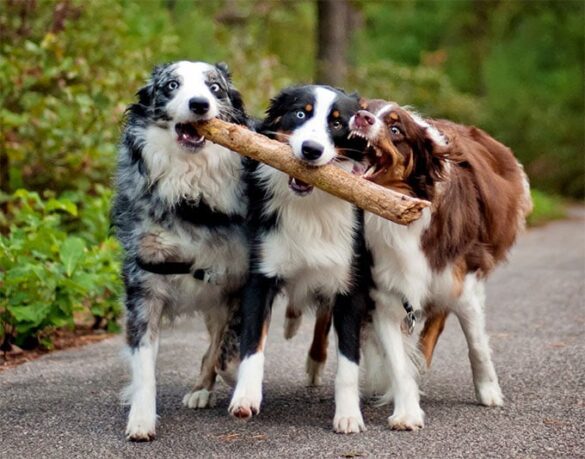Everything about Australian Shepherd Dog Breed
Are you looking for a furry companion that is loyal, intelligent, and full of energy? Look no further than the Australian Shepherd! This dog breed is known for its striking appearance, with its beautiful coat and piercing eyes, as well as its ability to excel in a variety of activities, from herding and obedience to agility and even search and rescue. But Australian Shepherds aren’t just great working dogs – they also make wonderful family pets, thanks to their affectionate and loving personalities.
In this blog, we’ll explore the health, nutrition, and training needs of Australian Shepherds, as well as tips for those interested in competitive obedience and agility competitions. So, whether you’re considering adding an Australian Shepherd to your family or just want to learn more about these amazing dogs, read on!
The history and origins of the Australian Shepherd breed
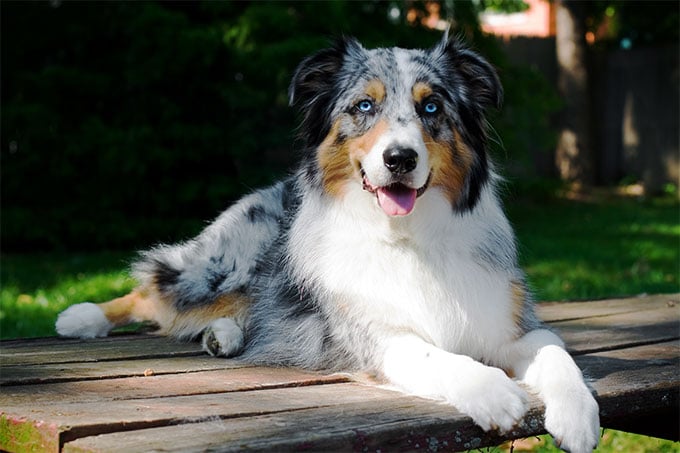
Despite its name, the Australian Shepherd breed did not originate in Australia, but rather in the western United States during the 19th century. This breed was developed to work as a herding dog for ranchers who were in need of a versatile and intelligent dog that could handle the harsh conditions of the American West.
The exact origins of the Australian Shepherd breed are unclear, but it’s believed that the breed was created through a combination of various herding dogs, including Collies and Border Collies, as well as Spanish Merino sheepdogs.
These dogs were originally known as “Little Blue Dogs” or “California Shepherds,” but eventually came to be called Australian Shepherds due to their association with Basque shepherds who had moved to Australia before settling in the United States. Today, the Australian Shepherd is a popular breed known for its intelligence, loyalty, and versatility.
Temperament of Australian Shepherd
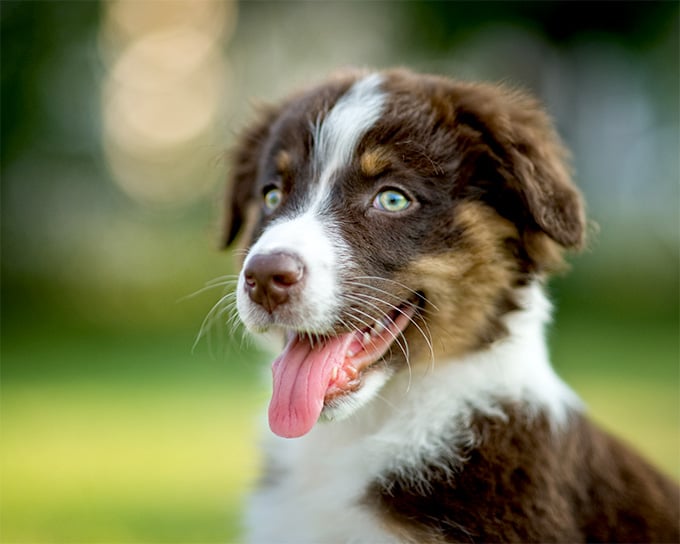
Australian Shepherds are known for their energetic, loyal, and intelligent temperament. They were originally bred as herding dogs and have a strong work ethic and desire to please their owners. They are often referred to as “Velcro dogs” because they love to be close to their owners and can become anxious when left alone for long periods of time.
Australian Shepherds are highly trainable and excel at obedience, agility, and other dog sports. They have a strong desire to learn and are always eager to please their owners. However, they can also be independent and stubborn at times, so consistent training and positive reinforcement are important.
Australian Shepherds are also very social dogs and enjoy being around people and other dogs. They are generally good with children and make excellent family pets. However, as with any dog, early socialization and training are important to ensure that they are well-behaved around people and other animals.
Tips for hiking with your Australian Shepherd in Australia’s national parks.
- Train your Australian Shepherd before the hike.
- Bring plenty of water and food for your dog.
- Use a sturdy leash and collar for better control.
- Check for any restrictions or regulations before hiking with your dog.
- Carry a first aid kit for both you and your dog.
- Keep your dog close to you while passing other hikers.
- Watch for signs of heat exhaustion in your dog.
- Be respectful of wildlife and keep your dog on a leash in sensitive areas.
- Pack a bag for your dog, including poop bags and toys.
- Choose the right trail length and difficulty level for your dog’s abilities.
How to keep your Australian Shepherd cool during the hot Australian summer months?
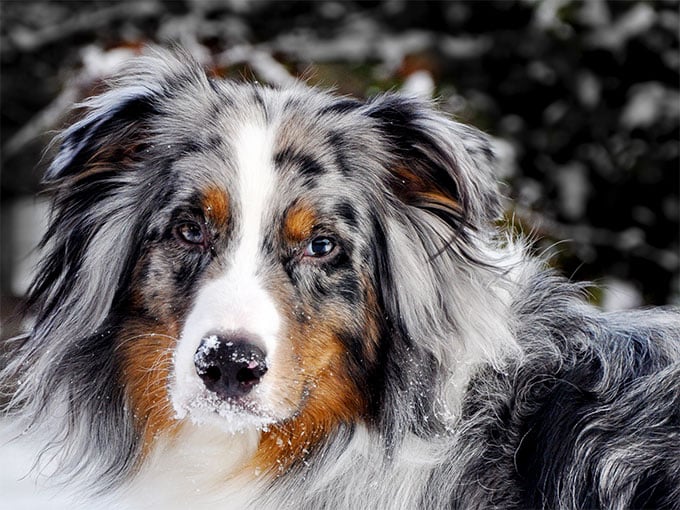
During hot summer months, it’s important to keep your Australian Shepherd cool and comfortable. One way to do this is by providing plenty of shade, whether it’s through trees, umbrellas, or even a small tent. You can also provide your dog with a kiddie pool or a sprinkler to help them cool down. It’s important to keep your dog hydrated, so make sure to have fresh water available at all times, and consider adding ice cubes to their water bowl.
Another way to keep your Australian Shepherd cool is by avoiding exercise during the hottest parts of the day and instead opting for early morning or late evening walks when temperatures are lower. You can also give your dog a cool, damp towel to lie on or use a cooling vest or mat to help regulate their body temperature. With these tips, you can help your Australian Shepherd stay comfortable and safe during the hot Australian summer months.
Australian Shepherds and their role in livestock herding in Australia

If you’re considering getting an Australian Shepherd, it’s important to understand their background and natural instincts. Australian Shepherds were originally bred to work on ranches in the Western United States, but they also played a crucial role in the development of the Australian livestock industry. In this section, we will explore the unique qualities of Australian Shepherds that make them excellent herding dogs.
The Australian Shepherd’s Herding Instinct
- Australian Shepherds were bred to work as herding dogs and have a natural instinct for herding livestock.
- They have a strong work ethic and can work for hours without getting tired.
- Australian Shepherds are known for their high energy levels and need for mental and physical stimulation.
The Australian Shepherd’s Role in Australian Livestock Herding
- Australian Shepherds played a crucial role in the development of the Australian livestock industry, particularly in the herding of cattle and sheep.
- They were well-suited for the harsh conditions of the Australian outback, where they had to endure long hours of work in extreme heat and cold.
- Australian Shepherds were valued for their intelligence, loyalty, and versatility in handling a variety of livestock, including sheep, cattle, and horses.
Training Australian Shepherds for Livestock Herding
- Training Australian Shepherds for livestock herding involves teaching them basic obedience commands, as well as specialized herding commands.
- Australian Shepherds need to learn how to read and anticipate livestock behavior in order to effectively move them.
- Positive reinforcement training is effective in training Australian Shepherds, using treats or praise to encourage good behavior.
The Future of Australian Shepherds in Livestock Herding
- While the use of Australian Shepherds in livestock herding has declined with the rise of mechanization, there is still a place for these dogs in the industry.
- Australian Shepherds continue to be valued for their intelligence, versatility, and loyalty, and are often used in other working roles, such as search and rescue or as service dogs.
- With proper training and care, Australian Shepherds can continue to play a valuable role in the Australian livestock industry.
Australian Shepherds and their compatibility with other pets in a household

If you’re thinking about adding an Australian Shepherd to your household, it’s important to consider how they will interact with other pets you may have. Australian Shepherds are known for their high energy levels, intelligence, and loyalty, but each individual dog is unique in their temperament and behavior.
In this section, we will explore the factors that contribute to an Australian Shepherd’s compatibility with other pets in a household and provide tips for introducing them to other animals.
Here are some tips for introducing an Australian Shepherd to other pets in a household:
Introduce them gradually
When introducing an Australian Shepherd to another pet, it’s important to do so gradually. Start with short, supervised interactions and gradually increase the length of time they spend together.
Use positive reinforcement
Reward your Australian Shepherd for good behavior around other pets, such as staying calm and not displaying aggressive behavior. This will help reinforce positive behaviors and encourage them to continue acting appropriately.
Supervise interactions
Always supervise interactions between your Australian Shepherd and other pets, especially in the early stages of introduction. This will help prevent any potential conflicts or misunderstandings.
Provide separate spaces
Provide separate spaces for your Australian Shepherd and other pets in the household, such as separate sleeping areas or designated play areas. This will give each animal their own space to retreat to if they feel uncomfortable or overwhelmed.
Seek professional help if needed
If you’re having trouble introducing your Australian Shepherd to other pets in the household, seek the help of a professional dog trainer or behaviorist who can provide guidance and support.
The differences between Australian Shepherds and other popular dog breeds in Australia, such as the Australian Cattle Dog and the Kelpie.
Choosing the best food for Australian Shepherd
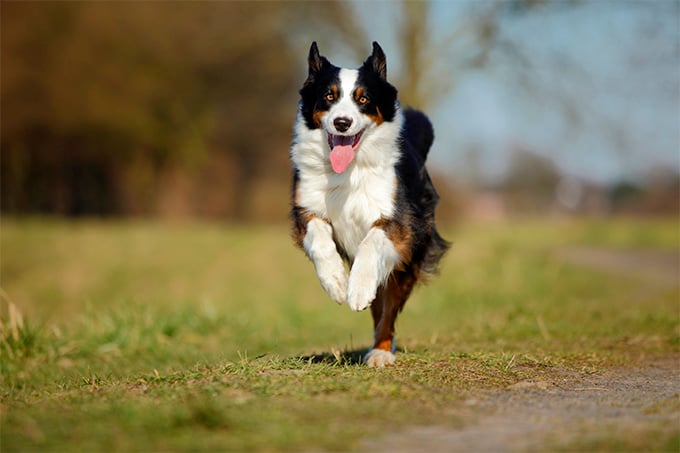
Choosing the best food for your Australian Shepherd is important to ensure that they receive the proper nutrition to maintain their health and well-being. Here are some tips to help you choose the right food for your Australian Shepherd based on their nutritional needs:
Look for a high-quality dog food
Look for dog food that is made with high-quality ingredients, including real meat as the first ingredient. Avoid dog food that contains fillers, artificial preservatives, and by-products.
Check the nutritional content
The nutritional content of dog food is listed on the label. Look for a dog food that contains a balanced ratio of protein, fat, and carbohydrates. Australian Shepherds are active dogs, so they require a diet that is high in protein to support their energy needs.
Consider their age and activity level
The nutritional needs of Australian Shepherds can vary based on their age and activity level. Puppies require a diet that is high in protein and fat to support their growth and development, while adult dogs require a balanced diet that meets their energy needs. Active dogs may require a diet that is higher in calories and protein to support their energy needs.
Consider any health issues
If your Australian Shepherd has any health issues, such as allergies or digestive problems, you may need to choose a dog food that is specially formulated to meet their needs.
Consult with your veterinarian
Your veterinarian can provide recommendations on the best dog food for your Australian Shepherd based on their individual nutritional needs and health status.
Remember, providing your Australian Shepherd with a healthy and balanced diet is essential to their overall health and well-being. By choosing the right dog food and feeding them according to their nutritional needs, you can help ensure that they live a long and healthy life.
Common health issues
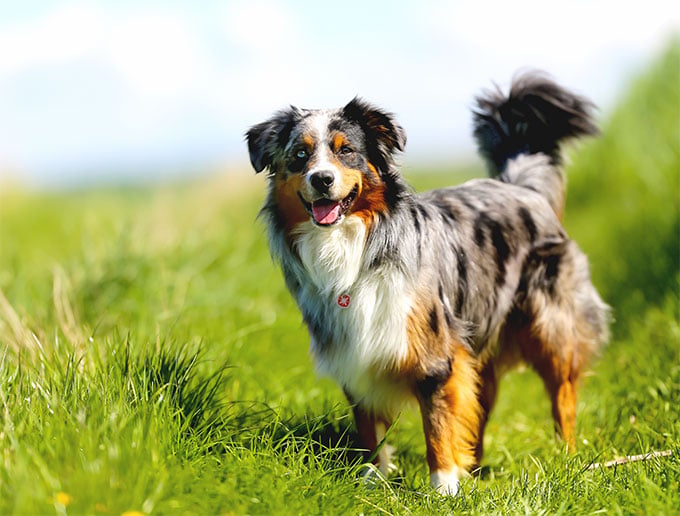
As with any breed, Australian Shepherds can be prone to certain health issues. Some of the most common health concerns to watch out for in Australian Shepherds include:
Hip Dysplasia
This is a genetic condition that affects the hips of dogs. It occurs when the hip joint doesn’t develop properly, causing pain and discomfort. Australian Shepherds are known to be prone to hip dysplasia. To prevent hip dysplasia, it’s important to only buy puppies from reputable breeders who test their breeding dogs for this condition.
Eye Problems
Australian Shepherds are also prone to a number of eye problems, including cataracts, progressive retinal atrophy, and Collie eye anomaly. Regular eye exams by a veterinary ophthalmologist can help detect and manage these issues.
Epilepsy
Epilepsy is a neurological condition that causes seizures in dogs. Australian Shepherds are known to be prone to epilepsy. There is no cure for epilepsy, but medications can help manage the seizures.
Allergies
Australian Shepherds can also be prone to allergies, including food allergies, seasonal allergies, and skin allergies. To prevent allergies, it’s important to feed your dog a high-quality diet, avoid exposure to allergens, and regularly groom your dog to keep their skin and coat healthy.
Cancer
Like many breeds, Australian Shepherds are at risk of developing cancer. To help prevent cancer, it’s important to provide your dog with a healthy diet, plenty of exercise, and regular veterinary check-ups.
In addition to these health concerns, Australian Shepherds can also be prone to obesity, dental problems, and ear infections. To prevent these issues, it’s important to provide your dog with a healthy diet, regular exercise, and regular veterinary check-ups. Additionally, you should brush your dog’s teeth regularly and clean their ears as needed to help prevent dental problems and ear infections.
Training Australian Shepherds

Australian Shepherds are highly intelligent and athletic dogs that excel in competitive obedience and agility competitions. Here are some tips for training your Australian Shepherd for these types of competitions:
Start with basic obedience training
Before you can train your Australian Shepherd for competitive obedience and agility competitions, they need to have a solid foundation in basic obedience training. This includes commands like sit, stay, come, and heel.
Train using positive reinforcement
Australian Shepherds respond well to positive reinforcement, so be sure to use plenty of praise, treats, and toys to reward good behavior. Avoid using punishment-based training methods, as these can be counterproductive and can damage your dog’s trust and confidence.
Incorporate agility equipment
Agility equipment like tunnels, jumps, and weave poles can be used to train your Australian Shepherd for agility competitions. Start with low jumps and simple obstacles, gradually increasing the difficulty as your dog becomes more confident and skilled.
Use a variety of training methods
To keep your Australian Shepherd engaged and motivated, use a variety of training methods, including clicker training, shaping, and lure training. Mix things up to keep your dog interested and challenged.
Attend obedience and agility classes
Attending obedience and agility classes with your Australian Shepherd can be a great way to learn new training techniques and to socialize your dog with other dogs and people.
Practice regularly
Consistency and regular practice are key to success in competitive obedience and agility competitions. Set aside time each day to work with your Australian Shepherd, and be patient and persistent in your training efforts.
Training your Australian Shepherd for competitive obedience and agility competitions takes time, patience, and dedication. By using positive reinforcement, incorporating agility equipment, and attending classes, you can help your dog reach their full potential and enjoy the thrill of competition.
The pros of owning an Australian Shepherd for first-time dog owners

Australian Shepherds are a popular breed of dog known for their intelligence, loyalty, and high energy levels. In this section, we will explore the benefits of owning an Australian Shepherd.
Companionship and Emotional Support
- Australian Shepherds are known for their loyalty and make great companions for individuals or families.
- They have a natural instinct to be protective of their owners and can provide emotional support.
Versatility in Work and Play
- Australian Shepherds are highly versatile and can excel in a variety of activities, including agility, obedience, and herding.
- They have high energy levels and need plenty of exercise and mental stimulation, making them a great fit for active individuals or families.
Intelligence and Trainability
- Australian Shepherds are one of the most intelligent dog breeds and are highly trainable.
- They excel in obedience training and can learn a wide range of commands and tricks.
Health Benefits
- Owning a dog, including an Australian Shepherd, can have numerous health benefits, such as reducing stress and anxiety, increasing physical activity, and providing social support.
- Australian Shepherds are generally a healthy breed, but like all dogs, require regular exercise, a nutritious diet, and routine veterinary care.
Community and Networking
- Australian Shepherd owners often form a community and can connect with others who share their love for the breed.
- This community can provide opportunities for socialization for both the dogs and their owners.
In a Nutshell
Australian Shepherds are intelligent, loyal, and active dogs that make great companions for families and individuals who are willing to provide them with the exercise, training, and attention they need to thrive.
When it comes to their health, it’s important to choose a high-quality dog food that meets their nutritional needs and to provide them with regular veterinary care. For those interested in competitive obedience and agility competitions, training and socialization are key to success. With patience, consistency, and positive reinforcement, Australian Shepherds can excel in a variety of activities and become beloved family members.
